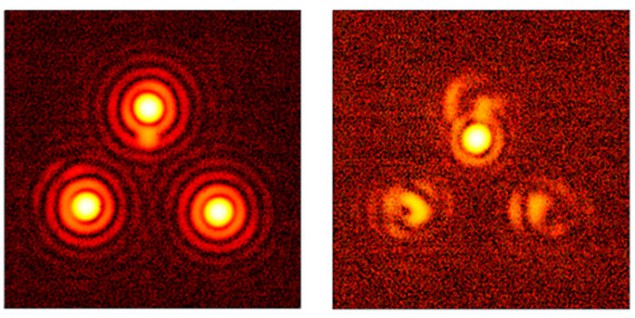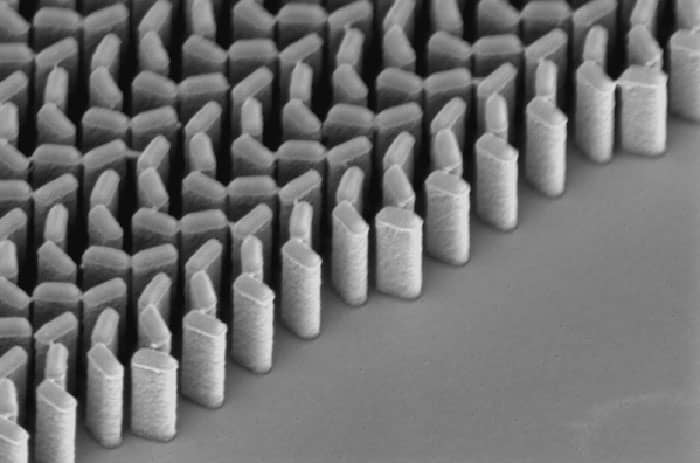Flash Physics is our daily pick of the latest need-to-know developments from the global physics community selected by Physics World‘s team of editors and reporters

How to see exoplanets near multiple stars
A new technique for detecting the faint light from exoplanets that orbit two or more stars has been proposed by Artur Aleksanyan, Nina Kravets, and Etienne Brasselet at the University of Bordeaux in France. Their method is an improvement on vortex coronagraphy, a telescope-based technique that was developed in 2005. It involves sending light from a star through a mask that puts the light on an outwardly spiralling trajectory. When the light strikes the telescope camera, it is shifted some distance from the actual position of the star. This makes it possible to see faint objects such as exoplanets that are nearby to the star. While the technique works well for exoplanets orbiting a single star, it cannot resolve exoplanets that orbit two or more stars. Brasselet and colleagues have now used reconfigurable defects in a liquid crystal to create a mask that they say will send light from several different stars along spiral paths. This involves using laser light to configure the defects so that the mask will work for a specific arrangement of stars. The trio tested their scheme by simulating an exoplanet in a three-star system using four beams of light. Writing in Physical Review Letters, they describe how the view of the simulated planet was enhanced significantly (see image above).
Flat lens for immersion microscopy is a first

The first flat lens for use with an immersion microscope has been made at Harvard University in the US – according to researchers there. Liquid-immersion microscopy involves placing the front lens of a microscope and the specimen in a liquid – usually water or oil. Liquids have higher indices of refraction than air and this improves the resolving power of the microscope. Front lenses used in high-performance microscopes are usually hand-polished to very high specifications, making the lenses very expensive. Furthermore, each lens will only work with fluids with specific indices of refraction. Now, Federico Capasso, Alexander Zhu, Wei Ting Chen and colleagues have created a flat lens comprising an array of titanium-dioxide “nanofins” that can be tailored for use with different immersion liquids (see image above). The nanofins are just a few hundred nanometres tall and “can be mass-produced with existing foundry technology or nanoimprinting for cost-effective high-end immersion optics”, according to Chen. The lenses can also be tailored to work in samples such as skin that have multiple layers, each having a different index of refraction. “Our immersion meta-lens can take into account the refractive indices of epidermis and dermis to focus light on the tissue under human skin without any additional design or fabrication complexity,” says Zhu. The new lens is described in Nano Letters.
Caltech students protest return of suspended astrophysicist
Students at the California Institute of Technology (Caltech) in the US staged a sit-down protest yesterday against a temporary return to campus by the astrophysics professor Christian Ott. Suspended from his job in 2015 for violating the university’s sexual-harassment policy, Ott was at Caltech at the request one of his graduate students to observe the student’s thesis presentation. According to BuzzFeed News, Ott was then escorted off campus by two faculty members. Ott is expected to return to his job in August 2017, which has raised concerns from some astrophysics students. Maya Fuller told BuzzFeed that she is “really uncomfortable” with the possibility that she may have to take a course taught by Ott. Graduate student Io Kleiser, who a Caltech investigation says was subject to gender-based harassment by Ott, said: “I personally would not like him to be on campus at all, ever.” Fiona Harrison, division chair for physics, math and astronomy at Caltech, suggested that Ott’s “behaviour and progress during his suspension” will be assessed before his return.



